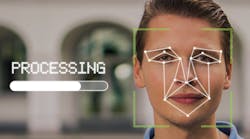Assistant Chief Armando Aguilar, who heads the Miami Police Department’s Criminal Investigations Division, spoke to OFFICER Magazine about the steps agencies need to take before using facial recognition technology.
This interview has been edited for clarity and length.
This article appeared in the January/February issue of OFFICER Magazine. Click Here to view the digital edition. Click Here to subscribe to OFFICER Magazine.
How does facial recognition assist with investigations?
Video evidence has become ubiquitous in all types of crimes we investigate. We averaged about 14-15% clearance for Part I crimes over the past 20 years. For the past 3 years, where we’ve gone all-in on facial recognition, our clearance rates have not been below 16%. I attribute about a full percentage point to facial recognition technology
How did the Miami PD craft its policy?
We reached out to as many stakeholders as we could. We started with representatives from the ACLU in Miami, knowing that they would not be in favor of this technology. All of their concerns were very valid, and we were able to incorporate most of them. We made sure that we treated a match as a tip that is called into CrimeStoppers. It’s up to the detective to go out and investigate the case. Another one was to include all of the search results in the investigator’s case file. We conducted media interviews, we got our state attorney’s office and elected leadership on board, and then we elicited public feedback through town halls. Once people heard what we wanted to do, the comments and the feedback was overwhelmingly positive.How important is it to include public input?
We learned from a lot of lessons other agencies learned. We weren’t the first to roll out this technology, but we were the first to do what we did as far as getting that public feedback. Whenever you’re going to roll out any type of technology that has these type of privacy implications and has raised a lot of concerns in either media coverage or has that potential because it’s kind of new and unknown, you’re better off just being open with the people who you serve.
How were Miami Police personnel trained?
We started using Clearview AI in late 2019. At the time, Clearview AI was giving trial accounts to anybody with a law enforcement agency email address. We realized we had about 60 officers and detectives who had these trial accounts, and we really didn’t know what they were doing. We decided to narrow that down to the dozen or so detectives and crime analysts that work out of our Real Time Crime Center. We gave them about two hours’ worth of training on what the new dos and don’ts of our facial recognition policy would be. Then we did a 30-minute online training session for all of the other members of our department. We felt that by restricting that access and requiring that anybody who needed somebody to be run through any of our facial recognition platforms, by requiring those officers and detectives to email our Real Time Crime Center with the image that they needed scanned, with the case number, with the type of crime they are investigating, and just those details, would obviously just restrict the use of this technology to official business only.
What have some of the benefits been?
We’ve just had some great success stories on cases that we either would never had solved or cases that would have taken us a lot longer to solve. One case that occurred this year, it was a murder and we had an eyewitness who was very cooperative. The witness saw a suspect shoot a victim and was upfront with the detectives and said, “Listen, I know this guy, I don’t know his real name, but I follow him on Instagram.” That witness was in our homicide office being interviewed and we were able to use this technology to go to that person’s Instagram account, pull the picture off of Instagram, which then yielded a match that got us his real name, we were then able to put him in a photo lineup and present it to the eyewitness. Within 24 hours, that suspect was in custody. We took care of everything within a couple of hours, and were able to bring this person into custody the following day without incident.
Listen to the full interview at officer.com/21293928
This article appeared in the January/February issue of OFFICER Magazine.




